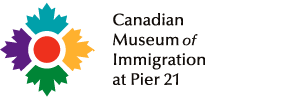News and Updates
Contact
Faculty of Social Science
Social Science Centre
Room 9438
Western University
T. 519-661-2053
F. 519-661-3868
E. social-science@uwo.ca
Pier 21 partnership puts Public History program on the national stage
July 25, 2016 Through the 2015-2016 academic year, students from the MA in Public History program worked with the Canadian Museum of Immigration at Pier 21 to tell stories of US immigration to Canada. Their work is now on display on the museum website and one of the students, Alexandra Weller, completed an internship at the museum.
Through the 2015-2016 academic year, students from the MA in Public History program worked with the Canadian Museum of Immigration at Pier 21 to tell stories of US immigration to Canada. Their work is now on display on the museum website and one of the students, Alexandra Weller, completed an internship at the museum.
The program has taken on community projects for 30 years, but the connection with Pier 21 is the first partnership with a national museum.
Working in the over-arching theme of American Immigration to Canada, students researched the New England Planters, the Underground Railroad and the Gold Rush. The students prepared larger collaborative research papers, of a more academic nature. The students then distilled their work into 5-page papers designed to be more accessible to the public. These papers are available on the museum’s website.
In January, the students worked on oral history projects highlighting two later groups of US-immigrants: people who left the US to avoid fighting in the Vietnam War; and members from LGBTQ community who moved to Canada in the 2000s. The students recorded interviews, and produced videos of these interviews. A major focus of the museum is oral history, and the videos will help make the history of these migrations accessible to the public.
To support the work, Pier 21 sent an oral historian and a collections manager for a one day workshop, and later a videographer to help produce the videos interviews. The students took on full responsibility for these projects, including planning, securing permissions for visual materials, and video editing. This allowed the students to develop a fuller of understanding of what is involved in public history.
Michael Dove, professor in the Department of History, and Internship Coordinator for the Public History program said that being able to work in different mediums and making history accessible to the public makes students more marketable when they leave the program. While they need to be able to research and prepare academic papers, they are also trained to meet hard business deadlines and structures requiring high-quality work and requiring them to select the most important or interesting aspects.
“It can be difficult to speak to a general audience and make them care about the topic,” said Dove. “Take Canadian history; the overwhelming idea is reluctance, but teachers haven’t done enough to connect students to Canadian history.”
Public history can also mean delving into controversial topics, and may result in more public reaction if members of the public disagree with how the history is presented. When the students were looking for participants for the second part of the project, they received some complaints about associated media coverage. “It’s a good lesson for students; if you are active in the public and media there is more potential for resistance or negative feedback,” said Dove.
The Public History program, and public history in general, is important because it helps make history accessible to the public in a real and tangible way, said Dove. Professional historians have ‘’moved away from telling stores want to hear,” and left it up to others to tell the stories, often in a non-academic and perhaps non-rigorous way. Public history is “putting history to work in the world.”
While the focus of the partnership was to create public displays, the research papers and raw footage from the interviews will be available at the Museum for future by researchers, and may be used to build future displays.
For the 2016-2017 academic year, students in the program will be working with the Royal Canadian Regiment Museum located in London, researching and writing the content for a Virtual Museum of Canada exhibit based on Royal Canadian Regiment during the First World War.

